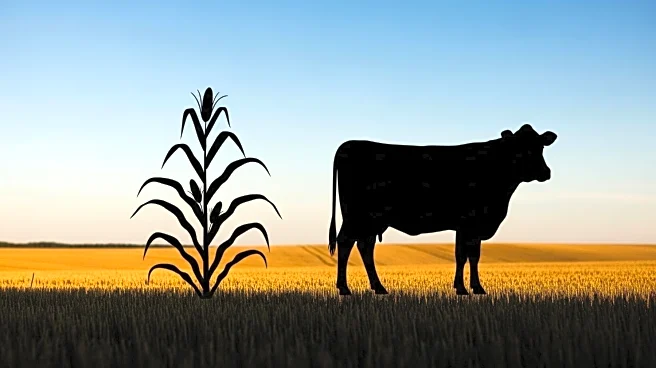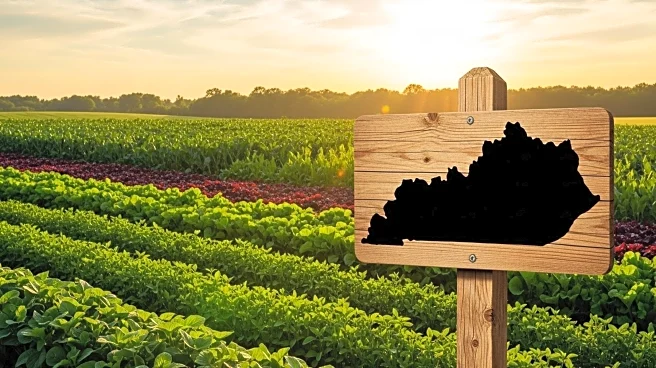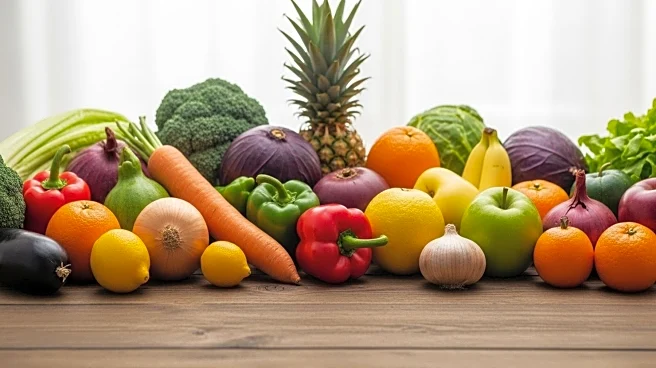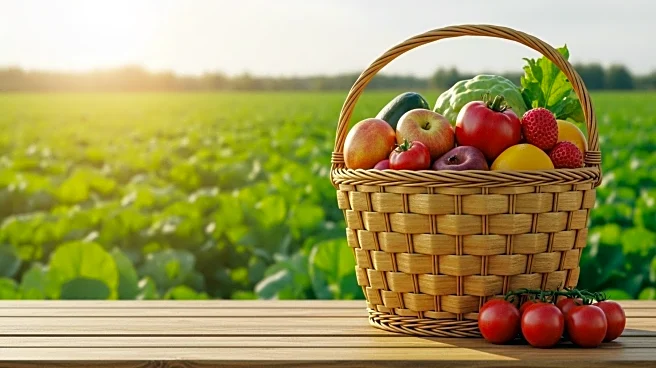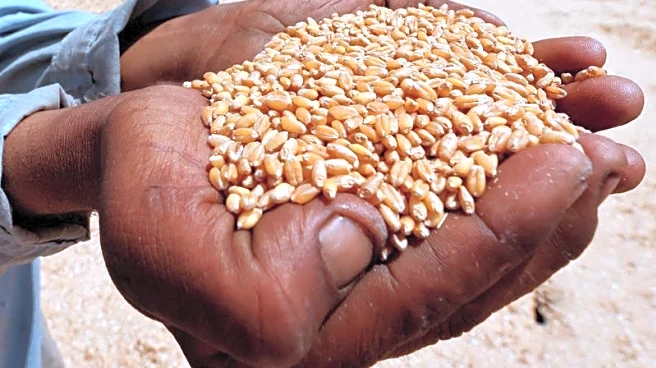What is the story about?
What's Happening?
The Purdue University-CME Group Ag Economy Barometer has revealed a significant decline in the number of U.S. farmers who believe their farms have strong balance sheets. The report indicates that only 67% of farmers felt confident about their financial standing last month, a notable drop from 82% in February and 90% in April 2023. This decline is attributed to increased financial stress among farmers, particularly in the grain sector, which is facing challenges from inflated production costs and weak crop prices. The report also highlights a disparity between crop and livestock farmers, with 24% of crop farmers expecting to require more operating loans in the coming year compared to 19% of livestock producers.
Why It's Important?
The findings of the Purdue University-CME Group report underscore the growing financial pressures on U.S. farmers, particularly those in the grain sector. The economic challenges faced by these farmers could have broader implications for the agricultural industry and rural economies. As crop farmers struggle with increased production costs and low crop prices, their financial instability could lead to reduced investments in farming operations and potentially impact food supply chains. Conversely, livestock producers, especially in the beef sector, are experiencing high profitability due to favorable market conditions, highlighting a divide within the agricultural sector. This financial stress among crop farmers could influence policy discussions around agricultural subsidies and support mechanisms.
What's Next?
The ongoing financial stress in the agricultural sector may prompt calls for policy interventions to support struggling farmers. Stakeholders, including agricultural associations and policymakers, might advocate for measures such as increased subsidies or financial aid to help farmers manage rising production costs. Additionally, the disparity between crop and livestock farmers could lead to targeted support strategies to address the specific needs of each group. As the situation evolves, the agricultural community will likely monitor market conditions and government responses closely to navigate these economic challenges.
AI Generated Content
Do you find this article useful?





